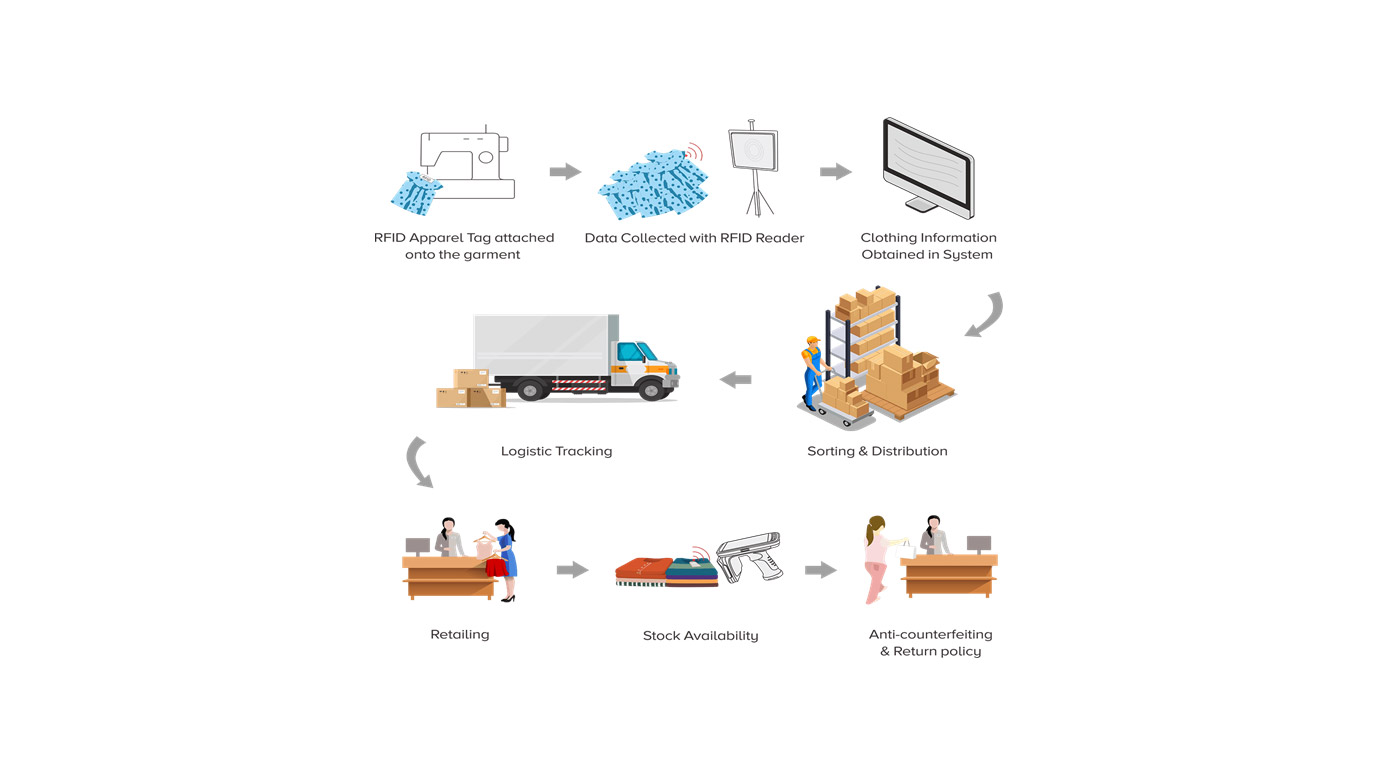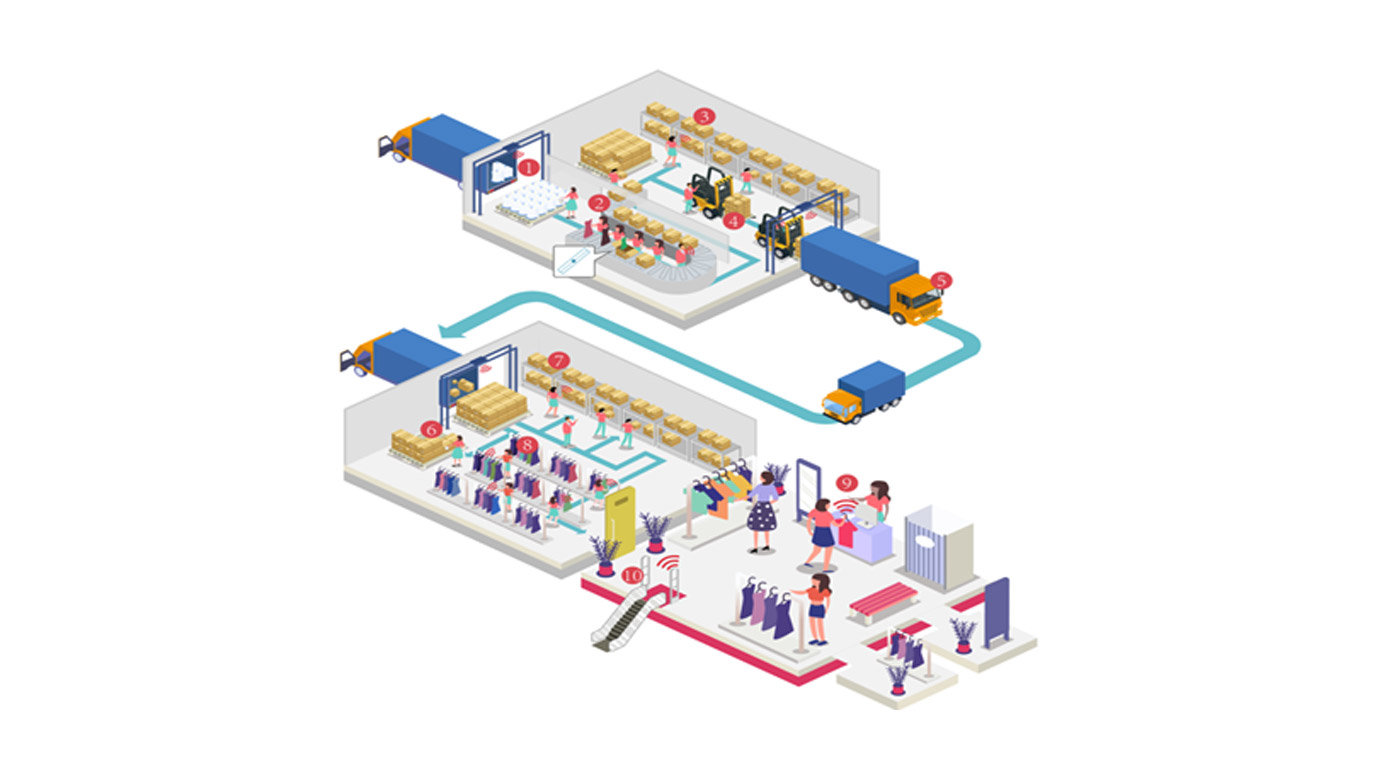New Technology
Aotsum is ready with new Technology. How..???
Aotsum is ready to govern the Apparel Industry with a new technology i.e. RFID -incorporated with our Custom Software Solution.
What is RFID (Radio Frequency Identification)?
RFID (Radio Frequency Identification) is a form of wireless communication.
The RFID reader is a network-connected device that can be portable or permanently attached. It uses radio waves to transmit signals that activate the tag. Once activated, the tag sends a wave back to the antenna, where it is translated into data.
A pistol-like gadget running across the display can tell how much inventory there is, and how that portion of the store is selling compared to other areas as well as to the previous years. RFID has also enabled taking month-end inventory to become a small two-person job, instead of having all the staff working intensively on this task.

Why are RFID tags being used in the apparel industry?
Radio Frequency Identification (RFID) technology has proven to be a lifeline for the fast-evolving fashion sector, simplifying processes and increasing efficiency.
RFID apparel retailer Smart inventory: Use RFID readers to carry out warehouse inventory, assuring inventory balance and prompt restocking, to avoid the problem that a specific clothing item in the clothes store is out of stock or has a broken code, and to ensure that customers' regular demands are met.

How do RFID garment tags work?
RFID technology uses radio waves to identify items, collect data about them, and enter that data straight into computer systems with little or no human interaction. A typical RFID machine is made up of three parts: an RFID tag, an RFID reader, and an antenna. RFID tags include a unique number and other information that is scanned by a reader and converted into data that is kept in computers.
RFID implementation can make the process easier for the customer, it significantly improves the sales performance of the brand by ensuring product availability.
As an item is sold, the store management immediately knows it via the RFID, and as a result, someone is immediately dispatched to the store stockroom to replace it.

What role do RFID tags play in the garment industry?
RFID improves control and visibility at every stage of the supply chain. Businesses may rigorously monitor production, sales, and storage at various places across the chain with little human resources. Clothing businesses keep vast inventories that are tough to manage manually. RFID technology enables these businesses to increase productivity, reduce time consumption, and eliminate human mistakes.
Improves quality: The clothing sector is heavily impacted by product damage and counterfeit items. Manually identifying each damaged product is difficult. RFID tagging allows for the monitoring of goods from manufacture through storage, as well as screening for faults at each checkpoint.
Long-Lasting: Traditional tags and barcodes can be tampered with and destroyed as a result of wear and tear. RFID tags, on the other hand, are extremely sturdy and long-lasting. They are unaffected by adverse environmental conditions such as heat, grime, and muck.
Data security: RFID tags feature a dedicated chip with a unique number that cannot be replicated. Data breaches and recording mistakes are common with traditional systems and barcodes. A barcode may be readily duplicated by anyone. RFID tags provide powerful data encryption that hackers cannot replicate. It also decreases the possibility of missing objects when used to collect data on a large number of items at once, reducing the possibility of human mistakes.
RFID tags can hold more information: Unlike standard tags and barcodes. RFID tags with non-volatile memory can store more data.
RFID can be used in combination with barcodes: If you are currently utilizing barcodes and want to transition to RFID, or if you want to utilize both at the same time. RFID tags may be readily labelled with printable paper labels.
Features of RFID Technology in Garment Business:
- To reduce the lead time between manufacturing and retailing.
- To keep up the stock up to mark
- Optimize Stock Levels
- Maximize sale conversion
- Faster product checkout and sharing of product information
- Tracking of product is easy with a Unique Identification Number
- Inventory Management is easier and faster
- The unauthorized takeaway will be alarmed
- Enhanced Customer Experience
- Perfect for shoplifting and Anti-theft


